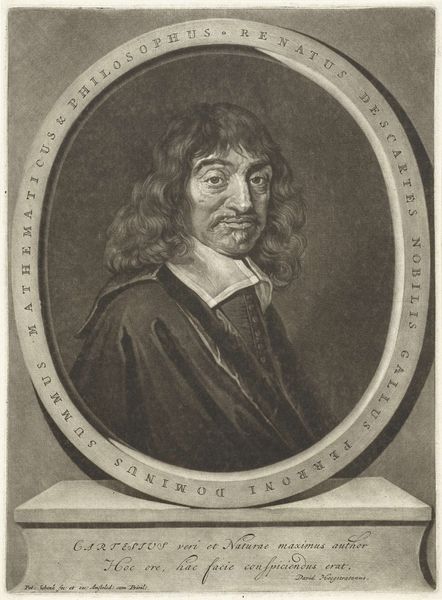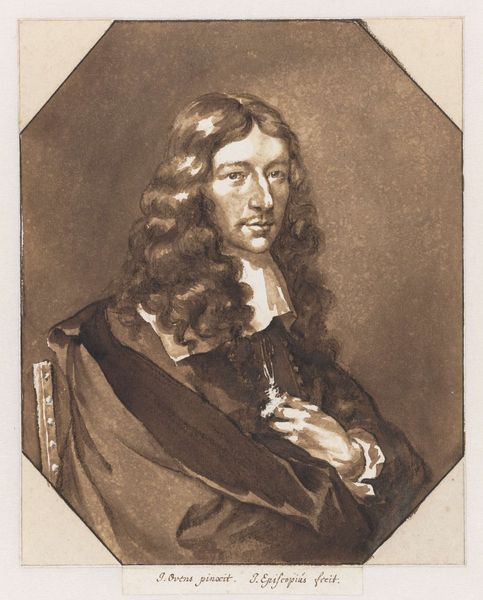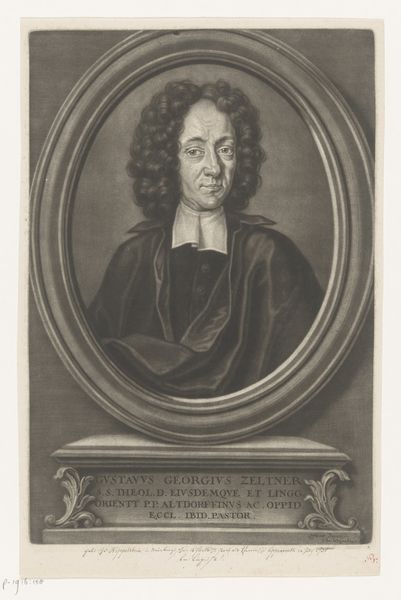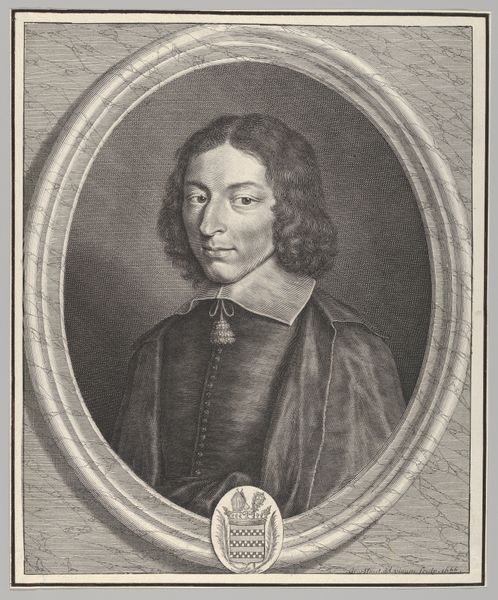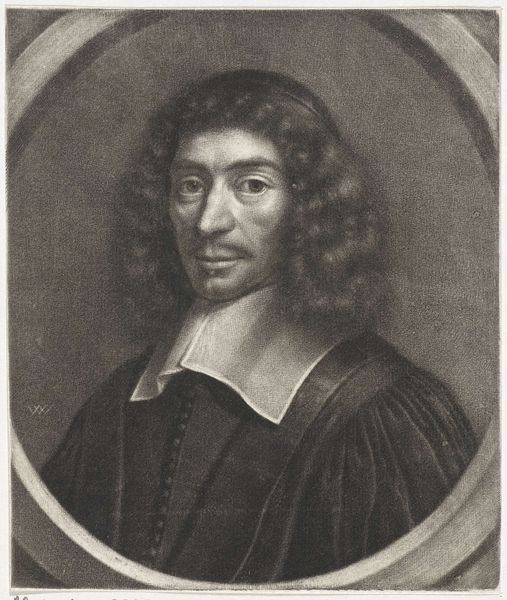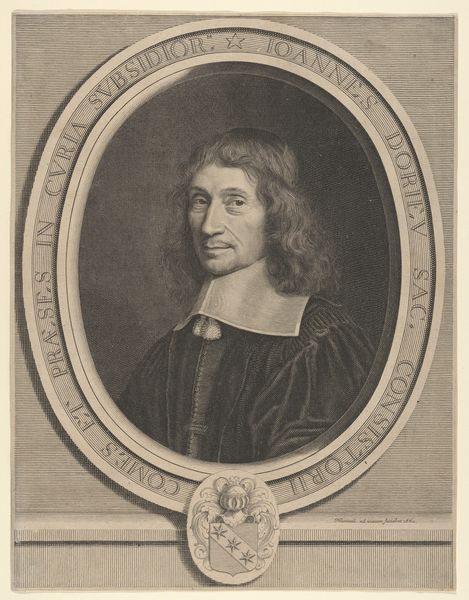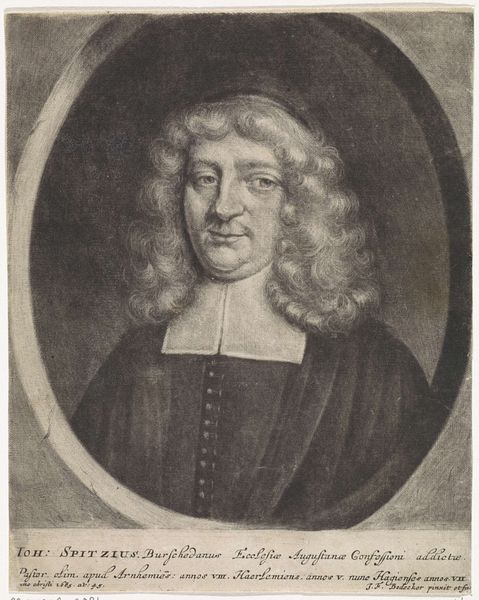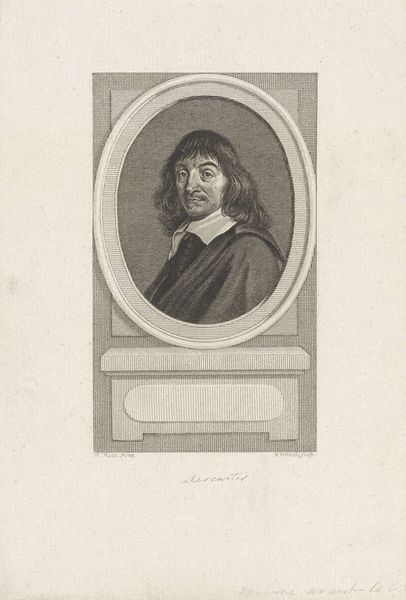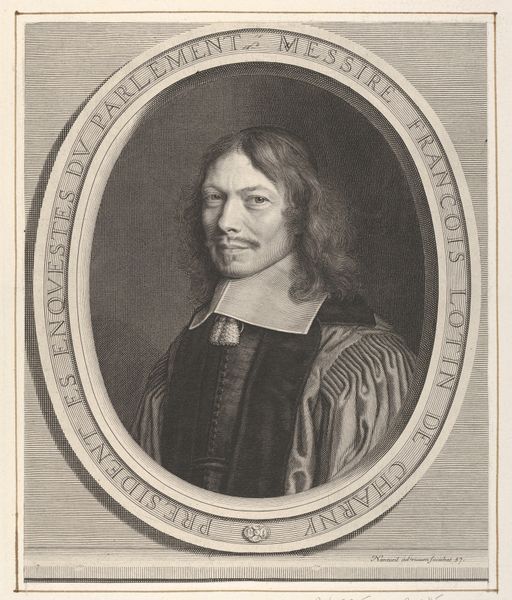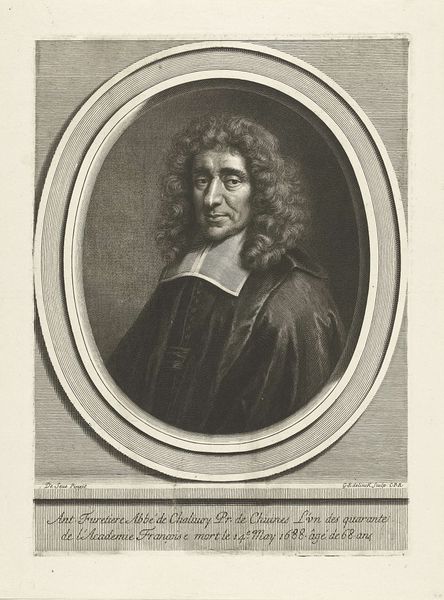
Dimensions: height 226 mm, width 146 mm
Copyright: Rijks Museum: Open Domain
Editor: Here we have Johann Elias Haid's "Portret van John Hilton", an engraving, likely from around the late 18th or early 19th century. The starkness of the engraving really emphasizes the sitter's features. What can you tell me about this work? Curator: What strikes me immediately is the portrait's function within the socio-political landscape of its time. While seemingly a straightforward depiction, engravings like this one served a crucial role in disseminating images and ideas. John Milton, as a figure, carried immense weight – his radical political and religious beliefs, often interpreted as proto-feminist and anti-monarchist, challenged the established order. This engraving then isn’t just a likeness; it's an assertion of those values, carefully curated and presented to a specific audience. Editor: So, it's not just about Milton the man, but what he represented? Curator: Precisely. Think about the Baroque style – the theatricality, the drama. Even in a relatively simple engraving, that influence is present. It's a performance of power, of intellectual gravitas. The gaze, the set of the mouth – it’s all carefully constructed to project a certain image, an image that Haid, as the engraver, would have consciously crafted for his own purposes, aligned with or perhaps even subtly critiquing Milton's legacy. Whose interests does this portrait truly serve? And how does it participate in the ongoing negotiation of Milton's cultural and political meaning? Editor: I never thought of it that way. I was so focused on the image itself. Curator: The image is the entry point. But it is within the network of power, patronage, and ideology, that an artwork finds its true voice. What assumptions are we making about Milton and Haid, based on the context available to us now, and how might those readings shift? Editor: I see. It's about digging beneath the surface to understand the deeper social currents. Thanks, that gives me a lot to think about! Curator: Indeed. And the exciting part is that these currents are always shifting, always open to new interpretation and critique.
Comments
No comments
Be the first to comment and join the conversation on the ultimate creative platform.
